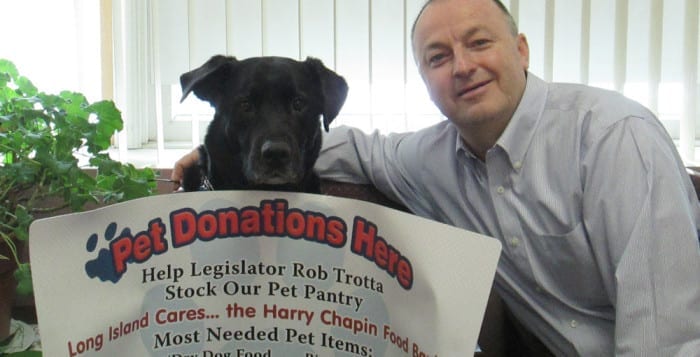To eat fat or to not eat fat is a question that has been dogging the medical community for years. It would seem, at least on the surface, that this should be a simple answer, and it is. Of course, we should eat fat. However, what type of fat is good for us and what type of fat may be detrimental is where it gets downright murky. Is low fat beneficial, or is a normal fat or even a high fat amount okay in our diet? We are constantly discussing fats because they could have an impact on chronic diseases, such as heart disease, stroke, cancer and obesity (1).
The problem is that we are focusing potentially on the wrong issue. It may not be about choosing one macronutrient over another. There are three macronutrients: fats, carbohydrates and protein. You would think with just three macronutrients there can’t be that many permutations to find a diet that works. The upshot is that it may be more important to focus on the diet as a whole rather than on the individual macronutrients. Unfortunately, there is no one specific balance that will fit the population at large.
The reason for writing this article is twofold: There is a recent study touting that fat consumption is not an issue; and there are potential new dietary guidelines on the horizon from the Department of Health and Human Services and the Department of Agriculture as a result of advisory committee recommendations. The government usually follows the recommendations of the advisory committee.
The advisory committee has suggested lifting the current dietary recommendation of 35 percent fat restriction (2). Does this mean we should eat more fat? Not necessarily. However, they have maintained that saturated fat remain less than 10 percent of the diet. This is not as severe as the American Heart Association, which recommends limiting saturated fat to 5 to 6 percent of your diet. Another significant advisory panel recommendation is that the 300-mg cholesterol restriction be removed. The advisory panel emphasized the importance of consuming unsaturated fats including nuts, fish, olive oil and vegetable oils.
It is difficult to cut fat. Do you replace it with protein or with carbohydrates? Food manufacturers have been replacing fat with sugar in processed foods. I know because when fat-free cookies were popular in the 1990s, my wife and I felt guiltless eating them all, although we were overwhelmed by the sugar.
The government is now more interested in reducing sugar than fats. We overconsume sugars by at least twofold. The advisory committee was in line with my comments above about focusing on the whole rather than looking at the parts. We cannot see the forest for the trees.
Let’s cut through the fat and look at the research, metaphorically speaking of course.
SHOULD WE LIMIT FAT AND
SATURATED FAT?
This is a loaded question. In a recent meta-analysis involving a group of six randomized controlled trials, the gold standard of studies, results showed that there were no statistically significant changes in the treatment groups (which one would think would be a “low fat” group) and control groups in regard to overall mortality and heart disease (3). The actual trials were performed from 1977 to 1983. The intent of the meta-analysis was to determine whether or not the original recommendations regarding fat and saturated fat restrictions were based on solid results. The researchers concluded that they were not.
Interestingly, five of six trials did not actually look at limiting overall fat to less than 30 percent or at reducing saturated fat to less than 10 percent. Instead, the trials replaced saturated fat with vegetable oils, which are high in polyunsaturated fats, specifically omega-6s. What is the significance of omega-6s? Keep reading!
ULTIMATELY, WHAT IS THE PROBLEM IF FAT IS NOT THE ISSUE?
There are two questions that stem from either reducing fat overall or replacing saturated fat with polyunsaturated fats. The first is: With what are you replacing the fat? The second is: Are all polyunsaturated fats safe or harmful, compared to saturated fats? Studying saturated fats is complicated because studies that show equivocal non-harmful results with these types of fats also contained unsaturated omega-3s as well (4). Even if saturated fat has shown no harmful effects, it has not demonstrated beneficial effects either.
REPLACING FATS WITH
CARBOHYDRATES
We had this long-standing belief that fats were the culprit in obesity, metabolic syndrome and diabetes. However, studies have shown that replacing fats with carbohydrates has resulted in an increase in obesity and diabetes, rather than a decrease. In an epidemiologic study, results show that refined carbohydrates, specifically corn syrup, increase the risk of diabetes, while fiber decreased the risk. Fat and protein had no effect (5). In other words, reducing fat may not be the best idea, depending on whether you’re replacing that fat with refined carbohydrates or not.
NOT ALL POLYUNSATURATED FATS ARE EQUAL
Certain types of fat may be more beneficial than others. A study comparing polyunsaturated fats, which include omega-3 fatty acids and omega-6 fatty acids, and their replacement of trans fats and saturated fats showed mixed results (6). Diets that contained both omega-3s and omega-6s had reductions in the risk of heart attack and heart disease death when compared to those containing omega-6s alone, which appeared to increase the risk of heart disease mortality. Certain vegetable oils contain high amounts of omega-6s such as safflower oil.
In the Sydney Diet Heart Study, there was a trend toward increased cardiovascular disease when replacing saturated fats with polyunsaturated omega-6 fatty acids referred to as linoleic acid (7).
Both of these trials were not without their statistical weaknesses. However, caution should be advised when replacing saturated fats with polyunsaturated fats; you should include an increase in omega-3 fatty acids and not necessarily an increase in omega-6s solely.
WHAT TYPE OF DIET IS BENEFICIAL?
Diets rich in heart-healthy foods are better than low-saturated-fat diets at reducing LDL (“bad”) cholesterol levels, a risk factor for heart disease, according to the results of a randomized controlled trial (8). Patients were randomized into three groups: one low-saturated-fat group and two portfolio diet groups, one with intensive counseling and one with moderate counseling. The portfolio diet was a heart-healthy plant-rich diet consisting of viscous fibers (referred to as sticky fibers), nuts, plant sterols, vegetables and soy proteins. Both portfolio diet groups experienced significant reductions in LDL similar to that of an early type statin while the low-saturated-fat diet did not. The study duration was six months, and it involved over 350 participants.
Thus, we need to focus on the diet as a whole, such as the Mediterranean diet, not on a single component, for that is when we get ourselves in trouble. Also, just because the fat is unsaturated does not mean it is necessarily healthy. Omega-3 fatty acids are most likely beneficial. Some vegetable oils are loaded with omega-6 fatty acids that induce inflammation and may be no better than saturated fats. It is important to maintain a reduction in saturated fat as long as it does not mean replacement with refined carbohydrates or potentially harmful omega-6s, though not all omega-6 fatty acids are created equal either.
REFERENCES:
(1) uptodate.com. (2) health.gov. (3) Open Heart 2015;2. (4) Ann Intern Med. 2014; 160(6):398-406. (5) Am J Clin Nutr. 2004;79(5):774-779. (6) Br J Nutr 2010;104:1586–600. (7) BMJ 2013;346:e8707. (8) JAMA 2011; 306:831-839.
Dr. Dunaief is a speaker, author and local lifestyle medicine physician focusing on the integration of medicine, nutrition, fitness and stress management. For further information, go to the website www.medicalcompassmd.com and/or consult your personal physician.











